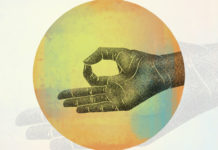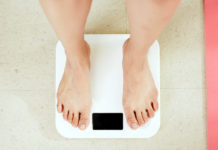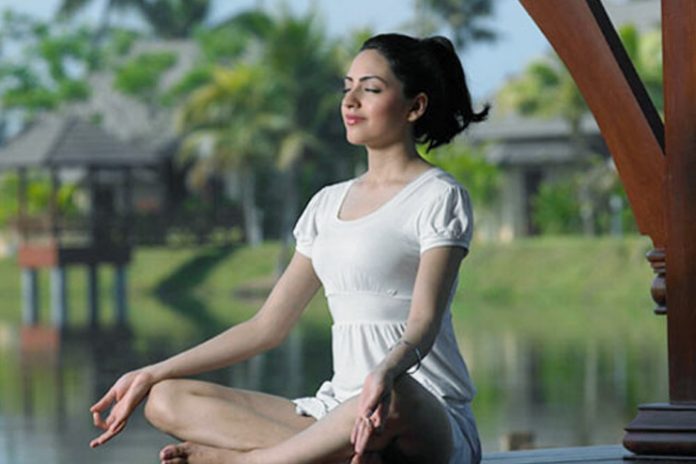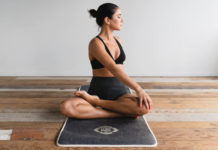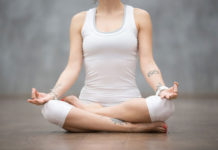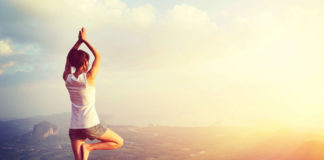For young women, life is going too tough will daily tasks at work place, paying bills and managing household. Additional to all these problems, there are other annoying things like high traffic, petty conflicts at home and health issues. You need a pause in life to breath for yourself. Just for yourself and for your mental peace. Isn’t it? Some find peace and happiness by doing something of their wish and few need some guidance and right lead to go on in life with ease and enthusiasm. Mental health should be stable to lead a happy life.
Yoga Asana: Mental health is getting destroyed due to various causes like exposure to toxins in and out, work stress and tough lifestyle. The imbalance of work life and personal is also causing mental stress in women. Sometimes heredity can also be a problem of mental stress. We need to encounter the mental illness with a resolution and the best of all is yoga practice. You can gain mental discipline and manage your day easily. Yoga was invented to prolong life based on powerful vedas. Yoga practice is has a historic facts which were invented by ancient saints for human well being. Some are mainly invented for mental health. The following asanas are for mental health and other health benefits.
What is Mental health? Mental health is a person being balanced emotionally and stress free. If a person is mentally unhealthy, it leads to panic attacks, depression and immense stress. Mental health is hugely important as every bit and corner of life is based on actions. Hence, giving your mind enough peace makes you feel refreshed and retain your abilities.
1. Child’s Pose or Balasana:
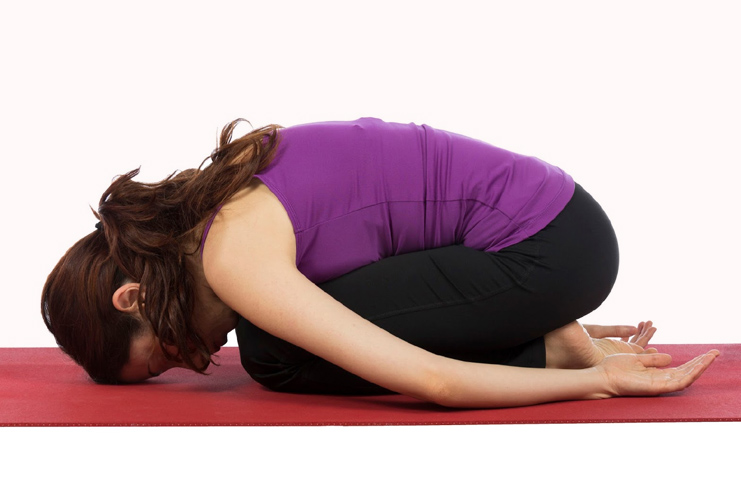
Balasana can be performed by yoga beginners as well. It is easy to follow and extremely beneficial for mental health. In Sanskrit, Bala means child and asana means posture. Therefore, this pose is called as child’s pose or Balasana. It is also one of the comfortable pose of yoga.
Benefits Of Child’s Pose:
- Child’s pose is a resting pose. So, it helps for body relaxation..
- The regulated breathing helps to retain calmness.
- 2This is also a beneficial yoga pose to remove anxiety and stress.
- Focusing on breathing helps to relax your mind.
- Helps relieve fatigue.
Steps:
- Spread a yoga mat on the floor.
- Sit on your heels and keep your knees either closer or apart.
- Slowly, move forward by bending your head down and let your forehead touch the floor. Exhale while doing this step.
- Extend your arms.
- Stretch your hands and keep facing them down on the mat.
- In the same position, gently press your chest on the thighs.
- You will get the perfect child’s pose by following these steps. Stay in the same position for 45 seconds to 1 minute.
- Regulate your breath.
- As you exhale, soften your body and the arms. Repeat for 4-12 breaths.
- Place your palms under the shoulders and gradually raise your upper body to return to the sitting position on the heels while inhaling.
- Then, relax.
Cautions:
- Pregnant women in later stage, should not practice this pose
- Women who are suffering with knee and arm injury.
- Diarrhea
Modifications: If you feel the uncomfortable sitting on your heels in this pose, use a pillow between your back thighs and calves.
2. Bridge Pose:
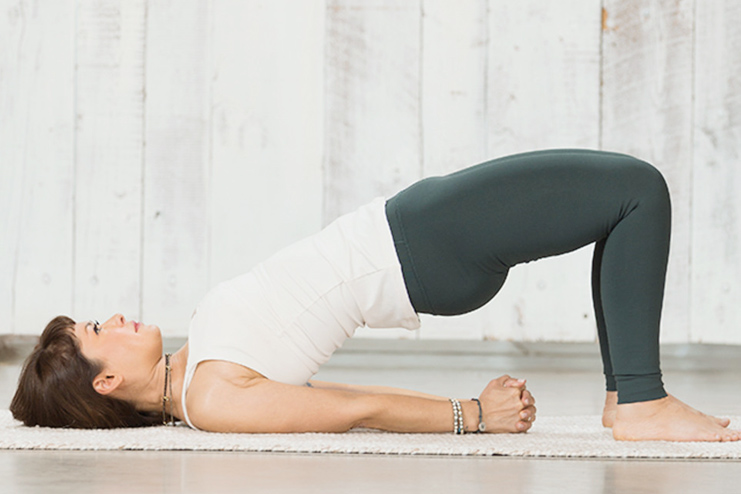
Sanskrit name of bridge pose is Set Bandha Sarvangasana. Setu means bridge and anga means limb. Hence, in setu bandha sarvangasana all your limbs are working to form a bridge pose. You need to make a shoulderstand playing this pose.
Benefits of Bridge Pose:
- Helps relieve stress.
- Helps to reduce mild depression
- Calms the brain.
- Good for central nervous system
- You can get rid of headache and backache due to depression
- Lessens fatigue due to daily tasks.
Steps:
- Start lying on back and bend both the knees by placing the feet on the floor.
- Keep your hip apart from the floor and face your palms down on the floor, the finger tips should be touching the heels slightly.
- Press the feet into the floor, inhale and lift the hips up, rolling the spine off the floor. Lightly squeeze the knees together to keep the knees hip width apart.
- To lift the chest up, press down the arms and shoulders. Engage the legs, buttocks to lift the hips higher.
- Now, breathe and hold for 4-8 breaths.
- Release by exhaling and slowly roll the spine back to the floor.
Cautions: Do not perform this pose if there is any recent or chronic injury to the knees/shoulder/back.
Modifications: If your facing any difficulty in keeping your hips lifted to create bridge pose, you can use a block and make yourself comfortable.
3. Cobra Pose:
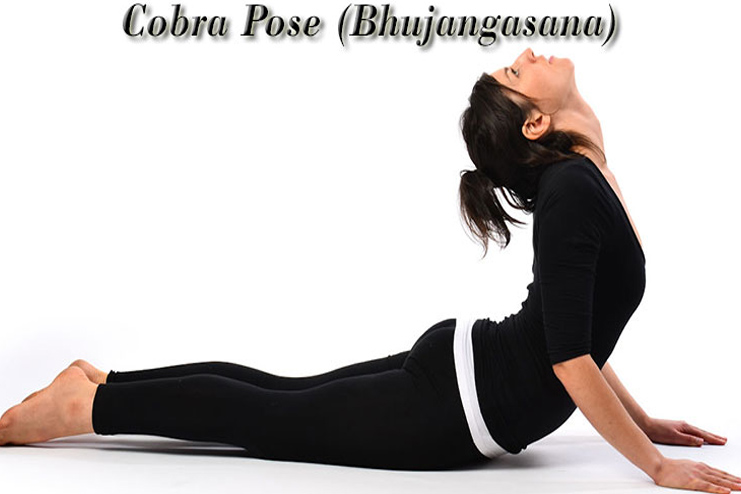
Cobra pose in Sanskrit called as Bhjangahasana. Bhujangah stands for serpent and asana stands for pose. This works for to keep your mental condition stable and healthy.
Benefits:
1. The cobra pose discloses the heart from anxiety.
2. As the shoulders are rolled down and heart is uplifted forward, the rib cage opens resulting in stress reduction and busting out the tensions.
3. This yoga pose is a great mood enhancer.
4. The Cobra Pose powerfully relieves fatigue from the body and calms the mind.
Steps:
- Lie down flat on your yoga mat.
- Stretch and place your hands on the mat and palms on the floor. Inhale while doing this step.
- See that your toes touch the floor.
- Raise your shoulders up.
- Replicate cobra by raising your head and face to the roof.
- Let your hips, thighs, and feet on to the floor.
- Stay in the position for about 15 to 30 seconds while breathing normally.
- While releasing the pose, slowly bring your hands back to the sides. Let your head come down and touch the floor back.
- Place your hands under your head. Then, slowly rest your head on one side and breathe.
Cautions:
- One who is suffering from severe back problems relating to the spine should avoid practicing this pose.
- If someone is having neck problems should clearly avoid this yoga pose.
- Someone suffering from stomach disorders like ulcers should ensure proper guidance while doing this yoga pose or avoid this yoga pose if discomfort is seen or felt.
- Pregnant women should refrain this yoga pose as a lot of pressure is felt at the lower abdomen and can also cause injury if the position of the arms is not correct while in this pose.
- Someone who is suffering from severe asthma should not try this asana as it has some breathing techniques involved.
Modifications: If the pressure on the lower abdomen is causing discomfort, then place a blanket below your pelvis and abdomen and with support raise the body up. Do not force your back by pushing it beyond your limit. If you want to set the back a bit comfortable, you can bend the elbows a slightly backwards and release the stress around the lower back. If your wrists are not strong to be placed on the floor directly, you could use a blanket as alternate option for cobra pose.
4. Corpse Pose:
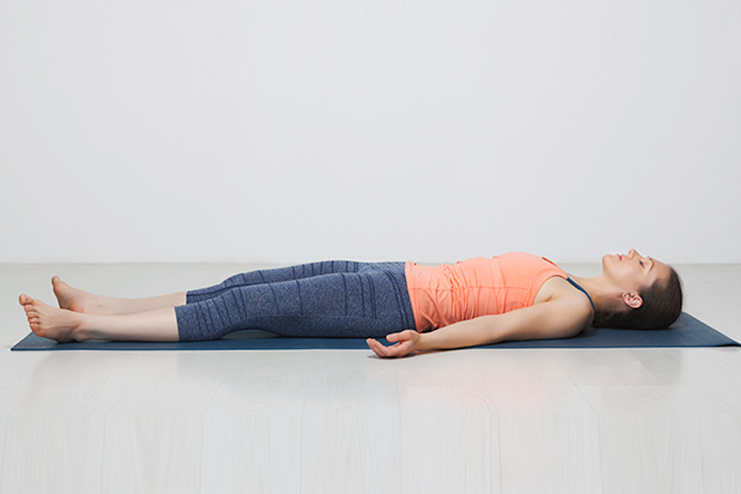
In Sanskrit corpse pose is named as Savasana. Corpse pose looks like taking a nap but it is to be fully conscious being awake. Awake and focus only on your breathe and relax your mind. This way you can fully take-in all the benefits of the pose.
Benefits of Corpse pose:
- Relaxes your whole body.
- Releases stress out of the body.
- You can relax without any tensions in this position.
- Works excellent for blood circulation.
- It helps reduce blood pressure, anxiety.
Steps:
- Lie down straight on your back (just like normal sleeping posture keeping legs apart)
- Leave your hands and palms normally on your side.
- Then, close your eyes.
- Deeply breathe your nose.
- Start focusing from top to bottom(head to feet)
- While you are breathing it allows to remove all your stress.
- You can practice for 3-4 minutes. With good concentration you can do it for long time.
5.Legs up the wall:
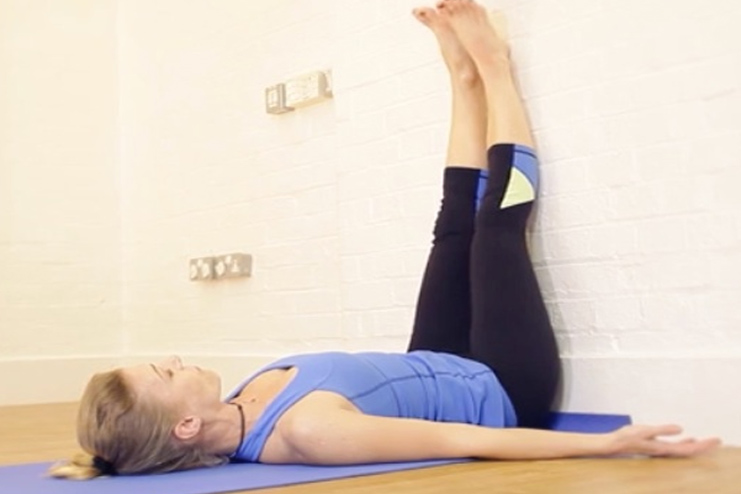
The Sanskrit word of Legs up the wall is Viparita Karani. This pose is easy to practice. One of the approachable poses without using much flexibility and strength. It works amazing for mental health.
Benefits:
- Helps lower anxiety, stress.
- Relieves lower back tension.
- Pelvic floor relaxation.
Steps:
- Spread your mat against a wall where you can stretch your legs.
- Place your backside as close as possible to the wall.
- Then, turn when you can stretch straight against the wall.
- Face up, release your palms and place your on tummy or thighs(as your comfortable)
- Close your eyes and relax.
- Now, focus on your breath with clear mind.
- Take deep breaths counting 5 for inhale and 5 for exhale. Your heart rate gradually comes down.
Cautions: It is advised to avoid this pose while menstruating as inversion is included for this pose. Standing suddenly can cause blood pressure fluctuations which can lead to injury.
Modifications: If your back is straining while practicing this pose, you can use pillow or rolled up towel under your lower back.
We need to make leaving easy and better when we have easier ways to opt. Take time for yourself and making these yoga asanas part of your day is a brilliant option. Women need self love more and they also need some real quality time. All 6 yoga asanas are quite simple to practice. So, give some quality by practicing easy asanas.













